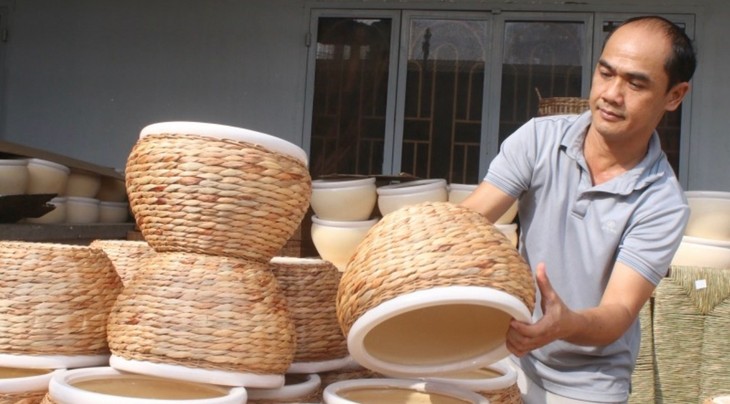To survive and grow, traditional craft villages in Binh Duong have diversified designs and applied technology and digital transformation. The provincial administration has joined their effort by providing timely support measures.

Lacquer facilities in Binh Duong have diversified their designs to accommodate market tastes. (Photo: VOV)
For the last two years, the productivity of pottery workshops in Binh Duong province has been lower than in the past, due to the impact of the COVID-19 pandemic on purchasing power and export orders.
This has forced potters to study the domestic and foreign markets and make appropriate changes like investing in automation to increase their competitiveness.
The Minh Long 1 Ceramics and Porcelainwares Company, the Cuong Phat Ceramics Company, and the Phuoc Du Long Pottery Company are typical examples of technological innovation in ceramic industry.
Diversifying ways to introduce products directly and online on social networks and e-commerce platforms has helped local businesses stand firm in the market despite the pandemic and armed conflicts around the world.

Nguyen Thanh Lap, Director of Thanh Loc Rattan and Bamboo Company (Photo: VOV)
Nguyen Thanh Lap, Deputy Director of the Thanh Loc Rattan and Bamboo Company, said the company has turned to online sales, which allows them to better communicate their product prices, designs, and quality. The customers have accepted this change and continue to buy Thanh Loc’s products.
He noted that generally, the volume of goods sold on electronic platforms is very stable and the company is exporting to Australia, Japan, and some European countries, such as Denmark.
“Despite armed conflicts around the world, some countries still buy our products because they are environmentally friendly, which Europeans like very much. They use the items for a year and replace them with new ones. So we export continuously,” Lap explained.
Other traditional crafts in Binh Duong such as lacquer, piggy banks, carvings, wooden clogs, and sculpture have found a way for their products to survive despite a hard world economy and scarce export orders.
Craft villages have changed their production and business models, applied digital technology, and carried out digital transformation from executive management to production to sales and trading.
The Binh Duong government has built separate zones for traditional craft development, addressed environmental pollution, secured loans for struggling production facilities, and enhanced training.
Another solution Binh Duong has used to preserve and develop traditional craft villages is to combine craft villages and tourism. This has expanded the market, boosted production of traditional items, and upheld the traditional cultural values of each craft village.
Dinh Cong Thieu, a lacquer artisan, expressed his hope that the state and province will help them atract tourists. “The more tourists come, the more products they will buy and the more the lacquer craft can develop,” said Thieu.
According to Nguyen Thanh Phong, Deputy Director of the provincial Department of Culture, Sports and Tourism, the Department asked the provincial Tourism Promotion Center to create a program to introduce craft villages under which, last year, many craft village tours were organized.
“We recommended that the Department of Agriculture and Rural Development recognize qualified products of craft villages as OCOP items and promote these products at trade fairs and on tourism-related websites,” said Phong, adding he hopes Binh Duong's traditional craft products will be widely introduced to people here and abroad.
Adapting and getting support from the provincial administration has helped 32 craft villages in Binh Duong survive and grow.
Thien Ly